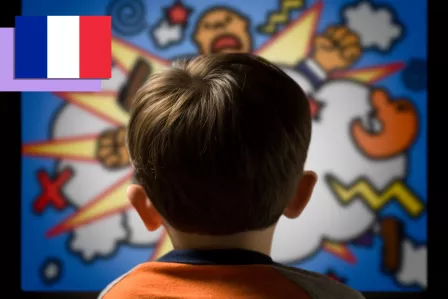A concerning trend among school-age children is the exposure to ultra-violent scenes (torture, beheadings, war scenes) on their smartphones. Alarmingly, 25 per cent of 11 to 18 year olds are engaging in this disturbing behaviour.

A concerning trend among school-age children is the exposure to ultra-violent scenes (torture, beheadings, war scenes) on their smartphones. Alarmingly, 25 per cent of 11 to 18 year olds are engaging in this disturbing behaviour. These scenes, often shared on platforms like Reddit, Telegram, Discord, or even social networks like X (formerly Twitter), are part of a troubling challenge where young people test their limits by watching extremely traumatic images. These include footage of drug cartels torturing opponents, terrorists attacking, and torturers murdering convicts.
The Risks
Exposure to ultra-violent content can severely impact a child's emotional and psychological development, much like unprepared exposure to sexual or pornographic scenes. Such content can desensitise children to violence, leading to aggressive behaviours or emotional disturbances. While platforms claim to filter violent content, these measures are often insufficient.
Parental Actions
- Raise awareness and educate: Talk to your child about the dangers of viewing violent content and encourage open communication. Let them know they can come to you if they encounter disturbing images.
- Be vigilant: Watch for signs of trauma in your child, such as sleep disturbances, anxiety, or intense emotional reactions. These may indicate exposure to distressing content.
- Remember the law: Teach your child that sharing violent content is illegal and that they should report such material when encountered. Reporting helps make the internet safer for everyone.
- Filter offensive content: Use parental controls on social networks and connected devices to block violent content. Tools like Google Family Link on Android or Apple’s Parental Controls can help manage app access, website categories, and screen time limits.
- Encourage assertiveness: Teach your child to say ‘no’ to peer pressure. Helping them develop this skill early will enable them to navigate online spaces more responsibly and maintain their physical and psychological well-being.
By taking these steps, parents and caregivers can better protect their children from the harmful effects of ultra-violence on smartphones and promote a safer, healthier digital environment.
Find more information about the work of the French Safer Internet Centre, including their awareness raising, helpline, hotline, and youth participation services – or find similar information for other Safer Internet Centres throughout Europe.
A concerning trend among school-age children is the exposure to ultra-violent scenes (torture, beheadings, war scenes) on their smartphones. Alarmingly, 25 per cent of 11 to 18 year olds are engaging in this disturbing behaviour.

A concerning trend among school-age children is the exposure to ultra-violent scenes (torture, beheadings, war scenes) on their smartphones. Alarmingly, 25 per cent of 11 to 18 year olds are engaging in this disturbing behaviour. These scenes, often shared on platforms like Reddit, Telegram, Discord, or even social networks like X (formerly Twitter), are part of a troubling challenge where young people test their limits by watching extremely traumatic images. These include footage of drug cartels torturing opponents, terrorists attacking, and torturers murdering convicts.
The Risks
Exposure to ultra-violent content can severely impact a child's emotional and psychological development, much like unprepared exposure to sexual or pornographic scenes. Such content can desensitise children to violence, leading to aggressive behaviours or emotional disturbances. While platforms claim to filter violent content, these measures are often insufficient.
Parental Actions
- Raise awareness and educate: Talk to your child about the dangers of viewing violent content and encourage open communication. Let them know they can come to you if they encounter disturbing images.
- Be vigilant: Watch for signs of trauma in your child, such as sleep disturbances, anxiety, or intense emotional reactions. These may indicate exposure to distressing content.
- Remember the law: Teach your child that sharing violent content is illegal and that they should report such material when encountered. Reporting helps make the internet safer for everyone.
- Filter offensive content: Use parental controls on social networks and connected devices to block violent content. Tools like Google Family Link on Android or Apple’s Parental Controls can help manage app access, website categories, and screen time limits.
- Encourage assertiveness: Teach your child to say ‘no’ to peer pressure. Helping them develop this skill early will enable them to navigate online spaces more responsibly and maintain their physical and psychological well-being.
By taking these steps, parents and caregivers can better protect their children from the harmful effects of ultra-violence on smartphones and promote a safer, healthier digital environment.
Find more information about the work of the French Safer Internet Centre, including their awareness raising, helpline, hotline, and youth participation services – or find similar information for other Safer Internet Centres throughout Europe.
- excessive use of technology online addiction online behaviour screen time
Related content
- < Previous article
- Next article >












